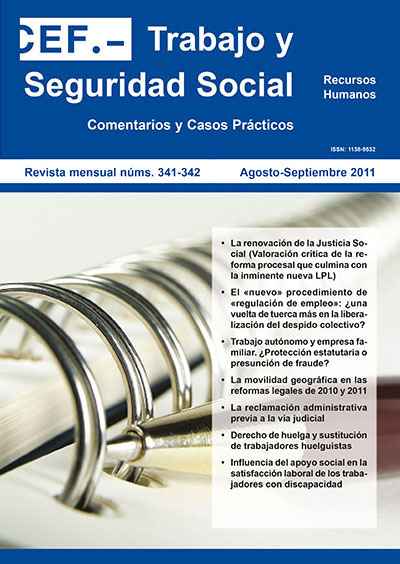The new employment regulation procedure. Giving another turn to the mass dismissal liberalization?
DOI:
https://doi.org/10.51302/rtss.2011.5113Keywords:
collective dismissal, companies restructuring, employment regulation procedures, social plansAbstract
The labour reform carried out by the Law 35/2010 influenced to a significant relaxation of dismissal liberalization, especially through the attempt to overcome the «uncertainties applicable», both administrative and judicial especially. The goal was to create a regulatory framework that instills more confidence to employers to resort to this mechanism of corporate restructuring, reducing the discretion available on the subject, both in administrative and judicial levels. In return, the employer must commit to take seriously the «social support schemes», so that decisions of readjustment would not impose by extreme disregard for the fate of the workers affected, but creating specific programs to improve employability of those.
This change in regulatory model had to be articulated in practical terms, through a redundancy procedure appropriate to the new requirements, hence the legal order for fundamental reform of previous statutory regulation. That is precisely the goal of Royal Decree 801/2011, here says. However, surprisingly, the government wanted to take the opportunity this regulatory clearance to modulate the scope of the reform, so that by way of increased documentary requirements, especially in situations of redundancy of losses estimated or possible, not current, it reduced the faculties open to the employer to proactive management of risk of loss in competitiveness, particularly in situations of intense crisis and uncertainty in markets. However, the opinion of the Council of State was very critical against this option, showing that substantial repairs in this and other issues that forced a far-reaching reform of regulations designed.
The final version has collected many of the suggestions from the Council of State, but not all. At the time, the Council of State has shown an excess of zeal in the control of the regulatory instrument, going beyond its advisory function to display as a kind of negative and positive legislator. The result is a regulation in that it shows clearly the struggle between two different conceptions of the regulatory process for employment and collective dismissal. Hence, there are important theoretical and practical problems. This paper gives an account of this process, identifying the main new regulation problems and detects some solutions to legal operators.


















